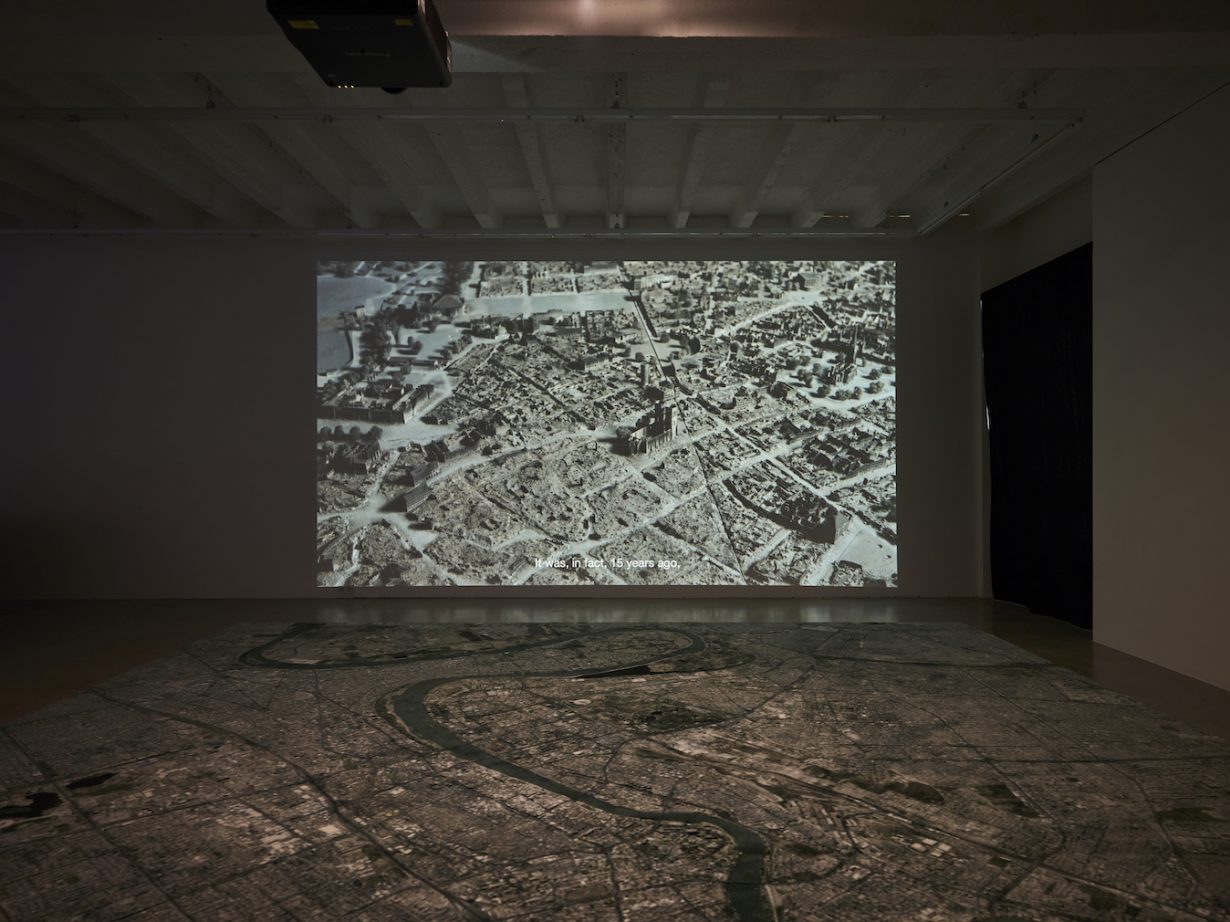Like a Good, Good, Good Boy at KOW, Berlin reminds us that not even love is safe from the corrupting force of state violence
Like everyone’s, my attitudes to art are shaped by unspoken shibboleths. Among the most egregious: that didactically intentioned artworks are, when it comes down to it, not really art at all. The title work of Hiwa K’s show, Like a Good, Good, Good Boy (2023), puts one more crack in this silly idea, reminding us that not even love is safe from the corrupting force of state violence.
A projection flanked by two monitors, this three-channel video documents a social sculpture, whereby the artist – born in Iraqi Kurdistan, and long based in Berlin – and several other men string a rope between K’s childhood home in Sulaymaniyah, his elementary school and the Amna Suraka prison, a favourite torture site of Saddam Hussein’s Ba’ath Party. In the video, K walks through the school and recollects his experience there, including beatings and indoctrinations into the Arabic language. One day, after confronting his sadistic teacher, K fled home, only to be betrayed by his family and sent back. The video also shows interviews with other students and with community members that are no less stomach-turning. In one scene K falls into conversation with an older man, who lives near Amna Suraka. By and by this gentleman explains that his wife’s sanity was nearly broken by the cries of rape victims emitting from the prison.
K is at his best when using a light touch, to give his viewer access to barbarous subject matter. The video Walk-Over (1973, 2014/2023) opens charmingly, with several older men playing soccer. They have paunches, and top-notch dribbling skills. These are the members of the 1973 Chilean national team, which once partook in a strange and historically pregnant spectacle. Following the US-backed overthrow of Chile’s democracy, the Soviet national team refused to play Chile in a World Cup qualifying match. In Walk-Over, the Chilean players reenact the game, in which they nevertheless took the field, cruising to victory on a streak of empty-netters. Throughout the video, the players give oral testimony to the spectacles of torture that took place in their national stadium under dictator Augusto Pinochet, who took power following the 1973 coup.

The projected video View from Above (2017) – created for Documenta 14 – roves over a spooky miniature model of Kassel, one of the German cities destroyed by Allied bombs during the Second World War. A narrator describes the partition of Iraq following the 1991 Kurdish revolution, and the un’s subsequent designation of Kurdistan as a ‘safe zone’. In Europe, refugees from this region were refused asylum. A tragic breakdown of sympathy is evoked; European bureaucrats, clearly aware of history, should know better. For good reason, K is at pains to drive home the fact that the UN-designated safe zones were anything but safe. His narrative therefore cycles between the terms ‘safe zone’ and ‘unsafe zone’ in a way that evokes an absurdist screenplay. As an attempt to underline the inane thought processes of dislocated bureaucrats, this strategy almost works. It strikes a too-clever note, confusing the work’s effect, though thankfully without derailing it completely.
A carpet laid in front of the View from Above projection, separately titled Destruction in Common (2020), portrays an aerial view of Baghdad. America’s decades-long evisceration of the Middle East obviously merits the most severe critical attention – but this carpet feels gimmicky. Ostensibly immersing viewers in the Iraqi capital, it seems tailored to a misguided conception of audience interactivity. A more effective loveliness comes through in a series of collages (Ball ballat Babel, 2023) made by overlaying translucent abstract shapes, colourful rudimentary images and printouts of Kurdish script. I enjoy the glowing collages for their light juxtaposition of languages: abstract, pictorial, linguistic, childish, adult. After reading their origin story, I like them even more. When K was a child, Kurdish Iraqis were granted black-and-white televisions, while their Arabic compatriots relished full colour. As a stopgap measure, K’s father taped coloured gels to the family’s TV screen. To surprisingly incisive effect, the cheery collages illustrate this story about the petty cruelties of persecution.
Like a Good, Good, Good Boy at KOW, Berlin, 28 April – 22 July
